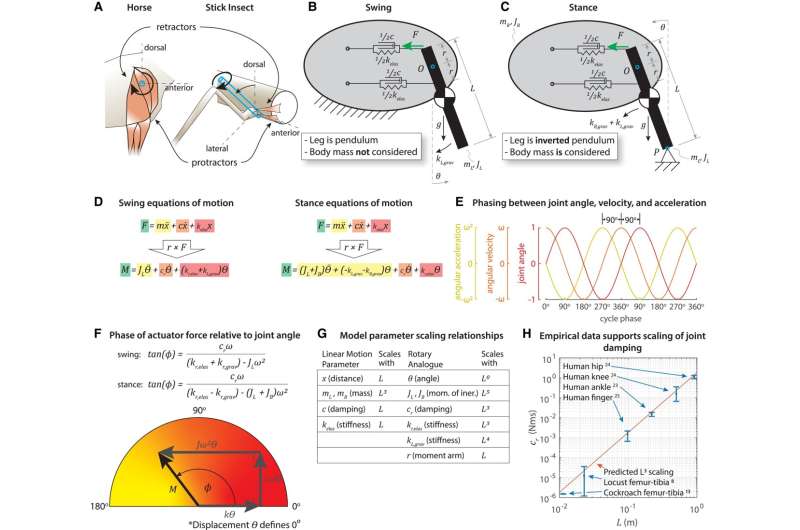Biomechanics research signals progress for musculoskeletal rehabilitation and walking robots

The findings of new biomechanics research could be used to develop more effective rehabilitation techniques for patients with musculoskeletal injuries.
The study titled, “Phase shift between joint rotation and actuation reflects dominant forces and predicts muscle activation patterns” has the potential to revolutionize the field of locomotion research, useful for researchers studying locomotion and engineers who design walking robots for scientific research.
A team of scientists from the University of Lincoln, UK, Case Western Reserve University and West Virginia University, U.S., analyzed the relationship between joint rotation and the synergistic dominating forces of movement. They found that a fundamental relationship exists between these two variables, which can predict muscle activation patterns.
The study has been published in PNAS Nexus, and the findings of which could help to develop more effective rehabilitation techniques for patients with musculoskeletal injuries.
Professor Gregory Sutton, Royal Society University Research Fellow at the University of Lincoln, said, “Both horses and stick insects walk, however, because of their size they walk in very different worlds. Horses, being large, walk in a world dominated by inertia and gravity just like humans, while stick insects, being small, are walking in a world where inertia and gravity are negligible compared to the spring forces within their tendons and the world around them.
“This paper quantifies the very different worlds that animals navigate as a function of their size and how fast they move, determining the dominant forces whether inertia, gravity, elastic forces, or viscosity within a given movement, and showing the consequences of moving with those dominant forces.
“We can use the findings to better understand how the nervous system controls these different movements. The research could also help to shape the design and development of robotics that can better accomplish these movements with the similar agility and dexterity of differently sized animals.”
Nicholas Szczecinski, Assistant Professor at West Virginia University, said, “The results of this study will help, and already have helped, scientists and engineers build animal-like robots with mechanics more closely matched to the animal mimic.
“Scientists and engineers have been building robotic models of animals for decades, either to improve the state-of-the-art in robotic mobility by applying what we know about animals, or to build a physical model of an animal that can be used to test hypotheses about motor control. Work toward either of these goals—application or modeling—is most productive when the balance of forces within the robot as it walks is consistent with that balance in the animal.
“For example, most robots we build have heavy motors that rotate each joint in each leg. Every time the robot takes a step, the motors must deliver torque to the joints to get the leg up to speed, then deliver torque in the opposite direction to slow it down and place it for the next step. This is very different from an insect, whose limbs are light and whose muscles are stiff. As a result, the muscles only need to deliver torque in one direction, the direction of motion, because the stiffness of their joints will stop the motion.
“We can use these principles to build more accurate robotic models of animals by changing how we build robot legs and by reducing the stepping frequency of the robot. By adding springs that work against each motor as it spins, we balance the inertia and elasticity of the robot’s legs in a way similar to an insect.”
The team will continue to expand on these findings, with the goal of developing new rehabilitation techniques that could be tailored to individual patients across a variety of health care settings.
More information:
G P Sutton et al, Phase shift between joint rotation and actuation reflects dominant forces and predicts muscle activation patterns, PNAS Nexus (2023). DOI: 10.1093/pnasnexus/pgad298. academic.oup.com/pnasnexus/art … 93/pnasnexus/pgad298
Citation:
Biomechanics research signals progress for musculoskeletal rehabilitation and walking robots (2023, October 10)
retrieved 10 October 2023
from https://techxplore.com/news/2023-10-biomechanics-musculoskeletal-robots.html
This document is subject to copyright. Apart from any fair dealing for the purpose of private study or research, no
part may be reproduced without the written permission. The content is provided for information purposes only.
For all the latest Technology News Click Here
For the latest news and updates, follow us on Google News.
